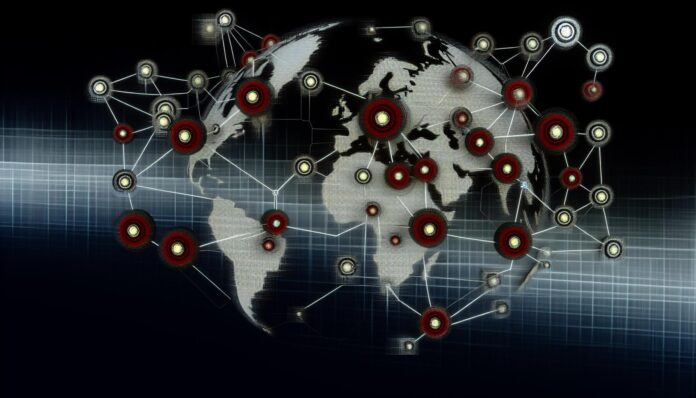The Cracks in a Connected World
Most importantly, as organizations and individuals worldwide become increasingly dependent on digital connectivity, the world’s global cybersecurity alarm system is showing signs of dangerous deterioration. We are witnessing an era where rapid digital integration has outpaced traditional security measures, creating significant vulnerabilities. Because many systems rely on outdated methodologies, breaches and attacks are more common and more sophisticated.
Furthermore, recent reports such as the 2025 Unit 42 Global Incident Response Report emphasize that attackers are evolving their techniques faster than defenses can be updated. In this context, outdated systems can no longer reliably protect sensitive data, and organizations must consider modern, proactive security frameworks to address these gaps.
Why the System is Fraying
The interconnected nature of the digital ecosystem once promised collective security as threat intelligence was shared across borders. However, recent events reveal cracks in this system. Intentional disruption has become common as attackers move beyond mere data theft, employing ransomware and extortion strategies to destabilize operations. Because these attacks are designed to dismantle conventional protective measures, the alarm system often lags behind emerging threats.
In addition, supply chain vulnerabilities and escalating insider threats amplify the stress on this system. Cybercriminals now infiltrate software supply chains and exploit public cloud environments to launch widespread attacks, as discussed in the analysis on Darktrace. Most importantly, the role of automated attack toolkits means that breaches can occur in minutes, stressing the imperative for real-time, AI-assisted responses.
Alarming Trends: The Consequences of a Broken Alarm System
Besides that, the sophistication of cyber threats represents only part of the problem. The consequences of a malfunctioning alarm system extend into regulatory, logistical, and trust domains. Regulatory patchworks, like the EU’s AI Act or California’s CCPA, complicate the situation by imposing diverse and sometimes conflicting security measures across regions. Therefore, global incident response is hampered by the lack of unified guidelines, as noted in top cybersecurity trends by OnlineDegrees.
Moreover, disinformation plays a significant role in undermining cybersecurity efforts. With the advent of deepfakes and bot-driven campaigns, genuine alerts are easily drowned out by fake warnings that create additional confusion. Consequently, genuine threats often go unaddressed, while false signals lead to resource misallocation and decreased trust across the board.
The Rising Cost of Inaction
Because the global economy is intricately wired to digital frameworks, the price of cybercrime continues to soar. With projections indicating an increase from $9.22 trillion in 2024 to $13.82 trillion by 2028, the actual cost of cyber threats is not only monetary but also deeply impacts operational capabilities and public safety. These figures highlight the urgent need for more responsive and proactive cybersecurity strategies.
Furthermore, the breakdown in our digital alarm system has a cascading effect on numerous sectors. As indicated by various analyses, delayed threat detection and inconsistent response measures leave organizations vulnerable long after an attack. Consequently, businesses face not only immediate financial losses but also long-term reputational damage and operational instability. The issues are well-documented in discussions such as the Gcore cybersecurity trends report, which stress the importance of rapid, coordinated response measures.
What Needs to Change
Because the current state of cybersecurity is unsustainable, comprehensive changes must be implemented immediately. Adopting a Zero Trust model —where every connection is considered hostile until verified— is a critical step toward minimizing vulnerabilities. Modern organizations are now integrating AI to bolster these security protocols, ensuring that robotic processes empower rather than replace human expertise. This approach is highlighted in various strategic reports such as those on SISA Infosec.
Additionally, harmonizing international regulations and incident reporting standards will reduce the fragmentation currently seen across different regions. By unifying security practices and reporting frameworks, stakeholders can ensure that rapid, coordinated responses are possible on a global scale. Besides that, modernizing supply chain security and enforcing stricter updates for both hardware and software will further seal off common vulnerabilities. Thus, a multifaceted strategy is required to restore faith in our digital defenses.
The Road Ahead
Therefore, the era of ‘set-it-and-forget-it’ cybersecurity practices is over. As attackers leverage automation, rapid innovation, and misinformation to strike with increasing precision, defenders must adapt with agility and enhanced collaboration. In doing so, organizations will better anticipate and counteract these threats before they escalate into full-blown crises.
Most importantly, it is time for all stakeholders—from large corporations to small startups—to assume responsibility for reinforcing the alarm systems that safeguard our digital domain. By fostering trust, aligning global standards, and continually evolving our defense mechanisms, we can aspire to redefine cybersecurity in a way that ensures a more secure future. The evolving landscape, as detailed in recent reports from institutions like Palo Alto Networks and Darktrace, calls for a robust, united front against the emerging perils of cyber threats.
Citations:
[1] Palo Alto Networks, 2025 Unit 42 Global Incident Response Report
[2] University of San Diego, Top Cybersecurity Threats 2025
[3] Gcore, 10 Cybersecurity Trends Set to Shape 2025
[4] Darktrace, Breaking Down Nation State Attacks on Supply Chains
[5] SISA Infosec, Cybersecurity in 2025: Everything You Need to Know



